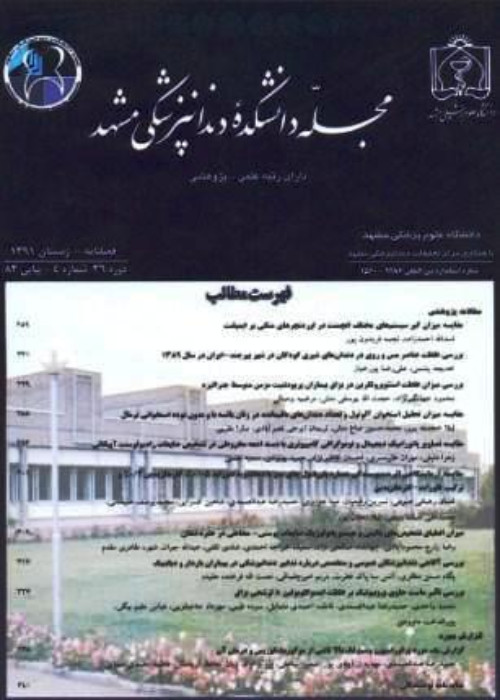Evaluating the Accuracy of Tempromandibular Joint Panoramic Radiography in Condylar Positioning
Author(s):
Abstract:
Introduction
Panoramic radiography is a diagnostic tool, which has a widespread application in the assessment of tempromandibular joint (TMJ) by the dentists as well as ear, nose, and throat specialists. Regarding this, the present study aimed to compare the accuracy of this method in the evaluation of the condylar position and osseous changes with that of the cone beam computed tomography (CBCT) as the gold standard method.Materials and Methods
This study was conducted on 28 patients with both TMJ panoramic imaging and bilateral CBCT imaging of TMJs. The condylar position was determined in closed-mouth and maximum intercuspation positions based on the measurement of superior, posterior, and anterior joint spaces and osseous changes of condyle, including erosions, osteophytes, resorbtion, Elys cyst, flattening, and sclerosis. The images were evaluated by two expert maxillofacial radiologists. Finally, the accuracy of TMJ panoramic radiography was compared with that of CBCT in terms of the sensitivity, specificity, as well as positive and negative predictive values.Results
According to the results, there was a significant difference between the two techniques regarding the diagnosis of anterior and posterior condylar positions in horizontal dimension (P=0.012, P=0.007). The sensitivity rates in the anterior and posterior positions were 50% and 51%, and the specificity rates were 55% and 55%, respectively. Regarding the identification of condylar position in vertical dimension, the two methods showed a significant difference only in the narrowing of superior joint space (P=0.004). The sensitivity and specificity in the narrowing of superior joint space in the vertical dimension were 100% and 79%, respectively. Regarding the osseous changes, the TMJ panoramic method had a poorer performance in the diagnosis of erosion (sensitivity: 29%, specificity: 95%), compared to the CBCT. Nevertheless, no significant difference was observed between the two methods regarding the diagnosis of osteophytes and flattening.Conclusion
TMJ panoramic radiography had a lot of limitations in the detection of the condylar position both in horizontal and vertical dimensions, compared to the CBCT. However, panoramic radiography can be relatively helpful in the initial screening of osseous changes for determining the healthy cases. Keywords:
Language:
Persian
Published:
Journal of Mashhad Dental School, Volume:41 Issue: 3, 2017
Pages:
197 to 208
magiran.com/p1740779
دانلود و مطالعه متن این مقاله با یکی از روشهای زیر امکان پذیر است:
اشتراک شخصی
با عضویت و پرداخت آنلاین حق اشتراک یکساله به مبلغ 1,390,000ريال میتوانید 70 عنوان مطلب دانلود کنید!
اشتراک سازمانی
به کتابخانه دانشگاه یا محل کار خود پیشنهاد کنید تا اشتراک سازمانی این پایگاه را برای دسترسی نامحدود همه کاربران به متن مطالب تهیه نمایند!
توجه!
- حق عضویت دریافتی صرف حمایت از نشریات عضو و نگهداری، تکمیل و توسعه مگیران میشود.
- پرداخت حق اشتراک و دانلود مقالات اجازه بازنشر آن در سایر رسانههای چاپی و دیجیتال را به کاربر نمیدهد.
In order to view content subscription is required
Personal subscription
Subscribe magiran.com for 70 € euros via PayPal and download 70 articles during a year.
Organization subscription
Please contact us to subscribe your university or library for unlimited access!


